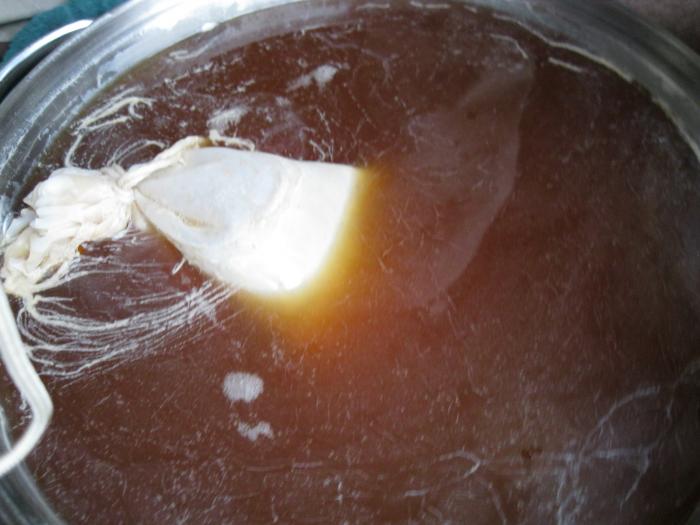Thunder_Chicken
Well-Known Member
I'm kicking around the idea of doing my first sour, a Berliner Weisse, and I just wanted to put together my plan/recipe to see if there are any problems with it.
For 5.5 gallons:
6 lbs. wheat LME (65% wheat and 35% pale malt)
Heat to ~120 F to dissolve DME.
Cool to 100F, pitch lacto
Keep at 95F-100F for several days to develop sourness.
Cool to yeast pitching temperature, pitch yeast.
Some questions & ideas that I have -
Lacto - What strain/sources of lacto provide good tart souring? I know that raw grain can be used to sour, but I am probably going to go with a clean strain for this batch. However, I have heard that some commercial strains don't provide great souring.
Hops - I don't mention hops because from what I understand lacto is inhibited by IBUs much over 10, and that the hops are really only needed to control unwanted bugs if you were doing a sour mash. Is this right?
Yeast - I've seen a lot of folks use just any old handy Sacc. ale yeast (e.g. S-05) as well as German ale and other Sacc. strains. I was kicking around the idea of using a fruity Brett strain like Brett. Bruxellensis trois, something that would complement the sour and would play nice in the acidic beer.
Ferment/Bottling/Conditioning timeline - I'm assuming at least a month in primary. My concern with bottling is my understanding that lacto tends to develop acidity over time (months to years), and I am wondering when is it safe to bottle. I know some people boil the wort prior to yeast pitch to halt lactic acid production, but I want to go for a mouth-puckering sour beer.
For 5.5 gallons:
6 lbs. wheat LME (65% wheat and 35% pale malt)
Heat to ~120 F to dissolve DME.
Cool to 100F, pitch lacto
Keep at 95F-100F for several days to develop sourness.
Cool to yeast pitching temperature, pitch yeast.
Some questions & ideas that I have -
Lacto - What strain/sources of lacto provide good tart souring? I know that raw grain can be used to sour, but I am probably going to go with a clean strain for this batch. However, I have heard that some commercial strains don't provide great souring.
Hops - I don't mention hops because from what I understand lacto is inhibited by IBUs much over 10, and that the hops are really only needed to control unwanted bugs if you were doing a sour mash. Is this right?
Yeast - I've seen a lot of folks use just any old handy Sacc. ale yeast (e.g. S-05) as well as German ale and other Sacc. strains. I was kicking around the idea of using a fruity Brett strain like Brett. Bruxellensis trois, something that would complement the sour and would play nice in the acidic beer.
Ferment/Bottling/Conditioning timeline - I'm assuming at least a month in primary. My concern with bottling is my understanding that lacto tends to develop acidity over time (months to years), and I am wondering when is it safe to bottle. I know some people boil the wort prior to yeast pitch to halt lactic acid production, but I want to go for a mouth-puckering sour beer.




